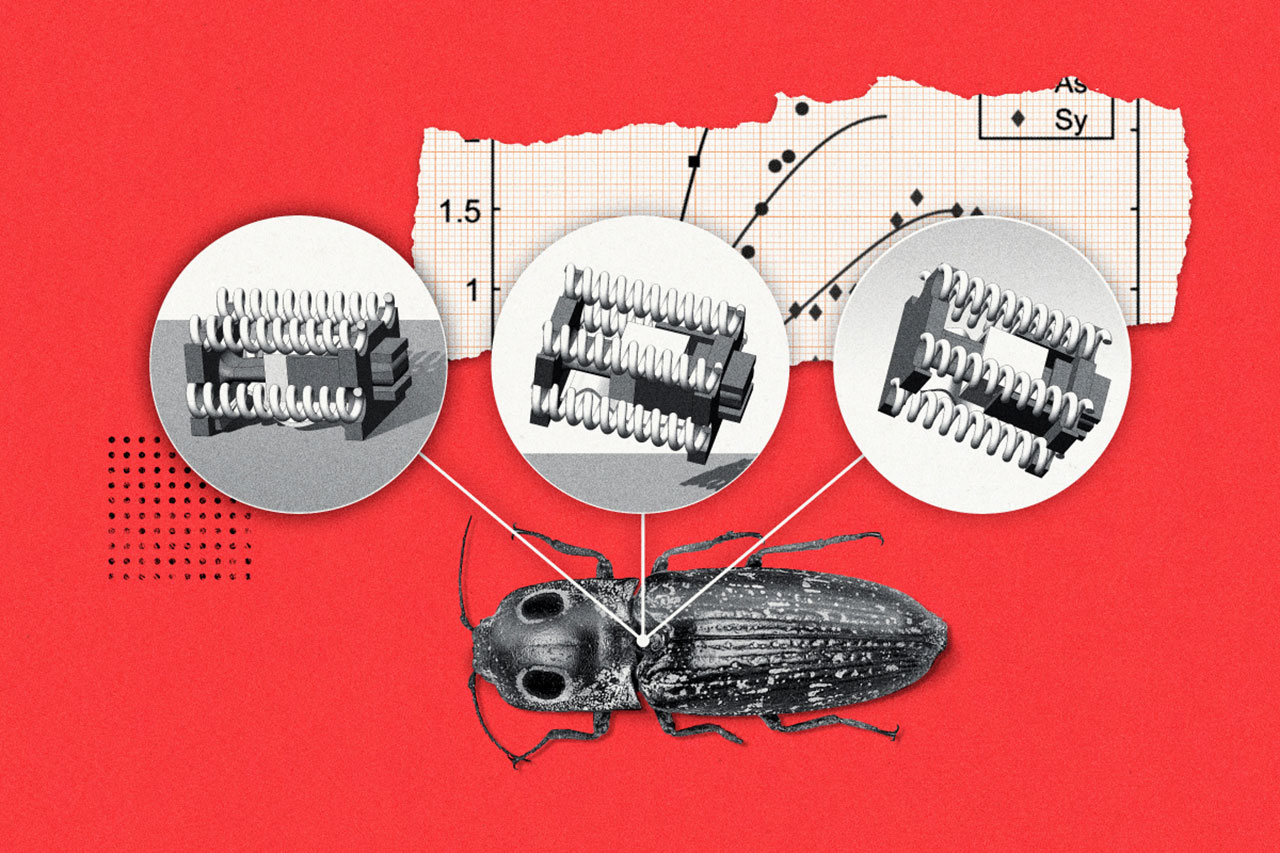
Fleets of insect-scale robots could perform unique functions enabled by their size to address needs in agriculture, inspection in restricted spaces, and search and rescue.
Inspired by recent advances in understanding the mechanism of power amplification in jumping beetles and ants, the University of Illinois researchers have developed a jumping robot that matches or surpasses both natural creatures and robots. In a new study, they demonstrated a series of click-beetle-sized robots small enough to fit into tight spaces. These robots are powerful enough to maneuver over obstacles and fast enough to match an insect’s rapid escape time.
Over the past decade, researchers at the University of Illinois Urbana-Champaign and Princeton University have studied click-beetle anatomy, mechanics, and evolution. A 2020 study discovered that snap buckling – the rapid release of elastic energy – of a coiled muscle within a click beetle’s thorax is triggered to allow them to propel themselves in the air many times their body length, as a means of righting themselves if flipped onto their backs.
In the new study, the team used tiny coiled actuators that pull on a beam-shaped mechanism, causing it to slowly buckle and store large elastic energy until it is spontaneously released and amplified, propelling the robots upward.
“This process, called a dynamic buckling cascade, is simple compared to the anatomy of a click beetle,” said Sameh Tawfick, mechanical science and engineering professor who led the research. “However, simple is good in this case because it allows us to work and fabricate parts at this small scale.”
Integrating this cascade in a robot enables jumping with unidirectional muscles and power amplification. These jumpers reach the energy densities typical of the best macroscale jumping robots while also matching the rapid escape times of jumping insects.
The team built and tested four device variations guided by biological evolution and mathematical models, eventually landing on two configurations that can successfully jump without human intervention.
“Moving forward, we do not have a set approach on the exact design of the next generation of these robots, but this study plants a seed in the evolution of this technology – a process similar to biologic evolution,” Tawfick said.
Researchers envision these robots accessing tight spaces to help perform maintenance on large machines like turbines and jet engines, for example, by taking pictures to identify problems. “We also imagine insect-scale robots being useful in modern agriculture,” Tawfick said. “Scientists and farmers currently use drones and rovers to monitor crops, but sometimes researchers need a sensor to touch a plant or to capture a photograph of a very small-scale feature. Insect-scale robots can do that.”
Journal reference:
- Yuzhe Wang, Qiong Wang, Mingchao Liu, Yimeng Qin, Liuyang Cheng, Ophelia Bolmin, Marianne Alleyne, Aimy Wissa, Ray H. Baughman, Dominic Vella, and Sameh Tawfick. Insect-scale jumping robots enabled by a dynamic buckling cascade. Proceedings of the National Academy of Sciences (PNAS), 2023; DOI: 10.1073/pnas.2210651120
New click beetle-sized robots jump using elastic energy
Source: Tambay News

0 Comments